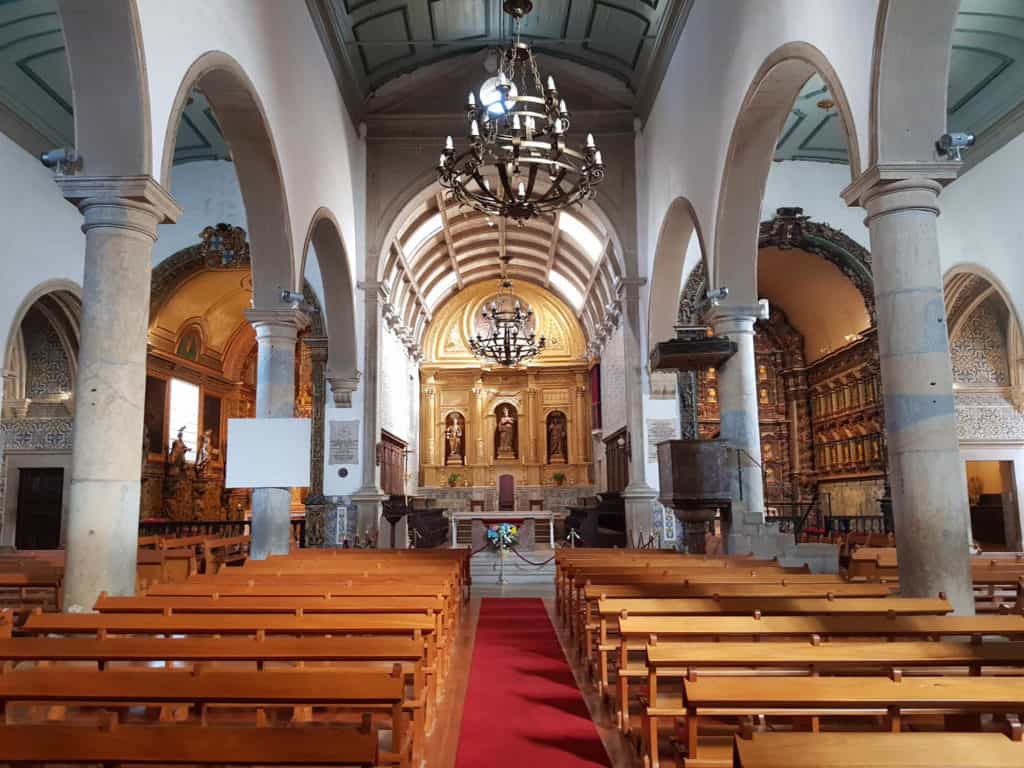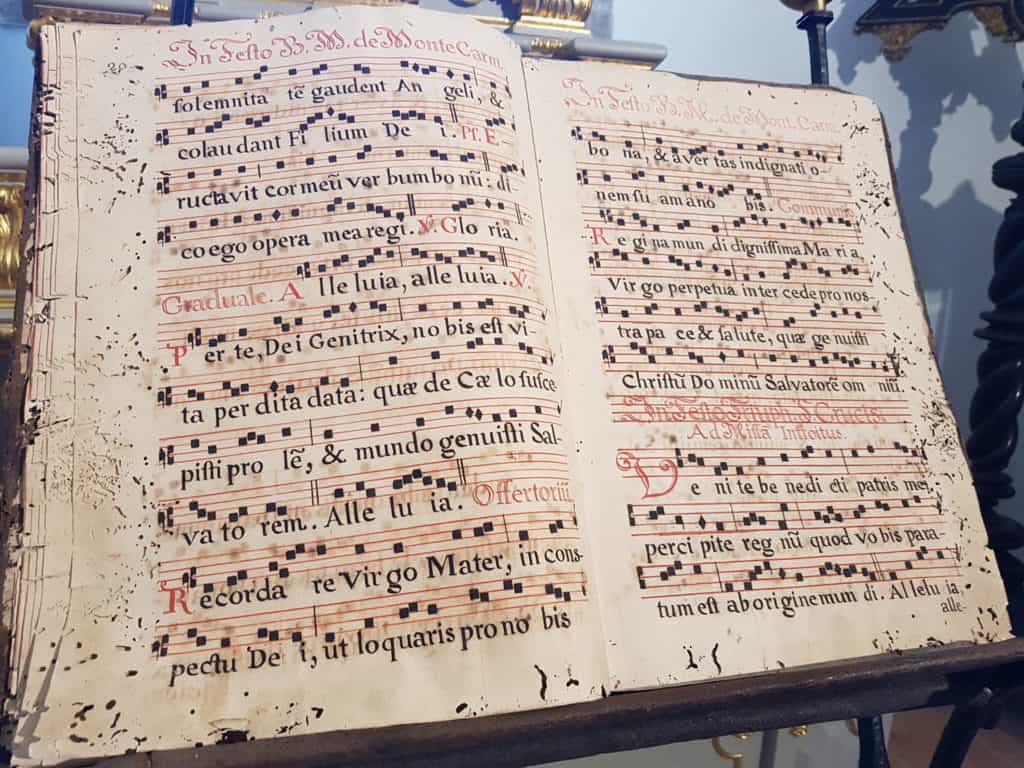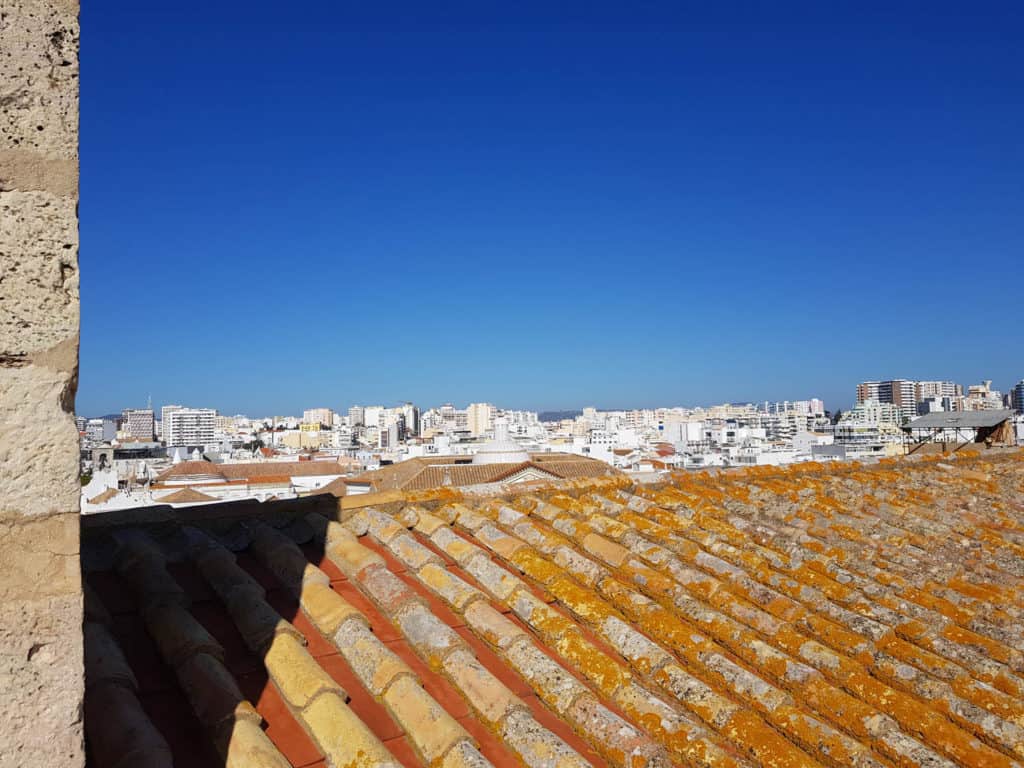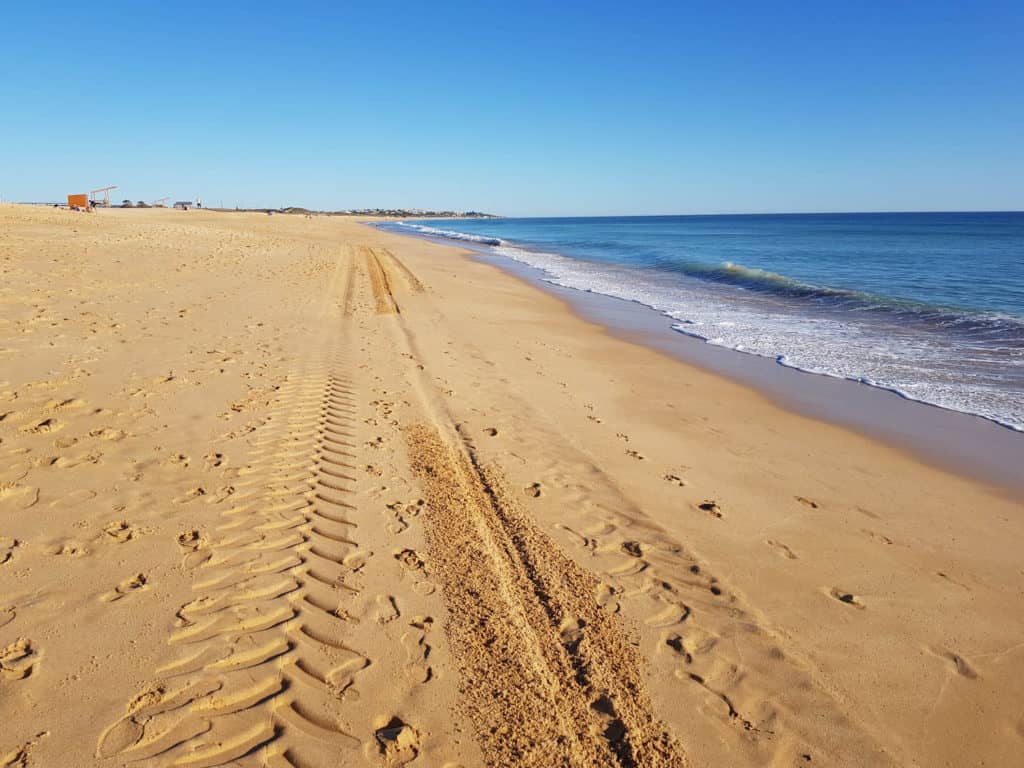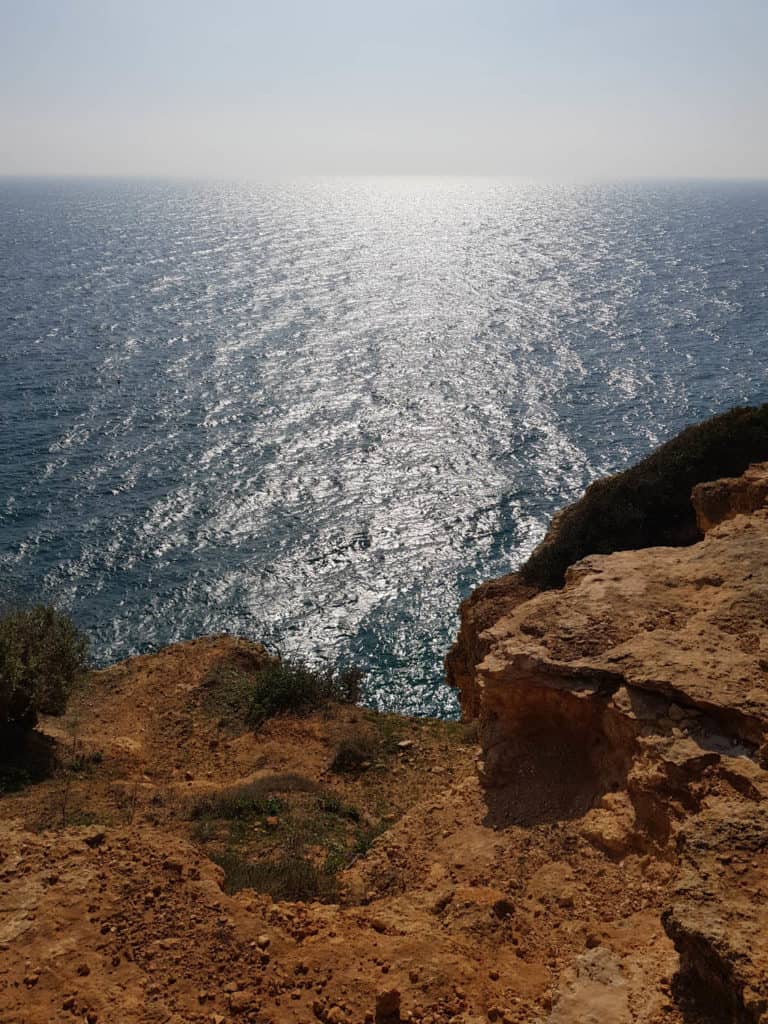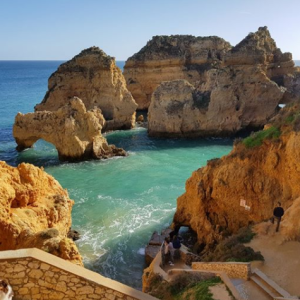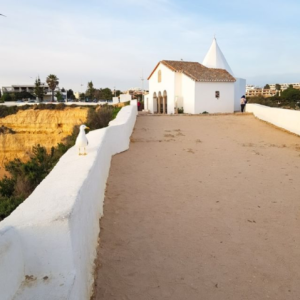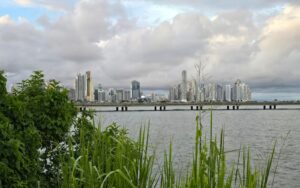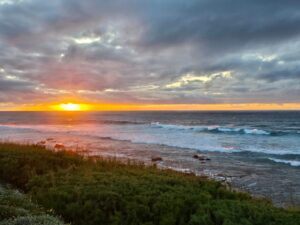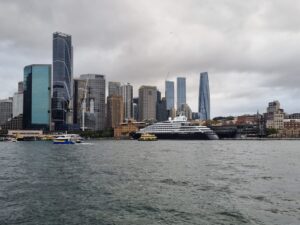Ambivalence – I like it here, but I’d like to keep walking.
Lagos has not only the enormous natural monuments of the coast to offer, but also impressive history and culture. The Igreja de Santo António, Igreja de Santa Maria de Lagos and the Igreja de São Sebastião are three churches with history and sometimes overwhelming richness, which stands in stark contrast to the rather inconspicuous outer appearance and almost overwhelms the visitor after entering. Many generations have donated and built here over centuries and wealthy citizens have set up monuments with donated, lavishly gold-decorated and preciously decorated, artistically designed chapels. The old town with its narrow alleys and stairs, cobblestone patterns and partly artistically tiled house facades is also an Eldorado for strolling and a culinary invitation for a tour through the pubs and restaurants.
For a change, the swell allowed a speedboat ride from Lagos to the Gruta com o algar de Benagil. The Barlavento with its formations of yellow and reddish brown limestone and sandstone rocks, caves, caverns and small bays is an unforgettable experience. Nevertheless, I will also climb the height on land to record the sound of the sea from above through the hole in the ceiling. The following day I was also allowed to experience the Ponta da Piedade once again with a boat trip from the sea side.
Of course, an excursion to the nearby local mountain, the Fóia, should not be missed. It belongs to the Serra de Monchique and is with 902 m the highest elevation of the Algarve and therewith the south of Portugal. From there, on a clear day, one has a view of almost the whole Algarve – from the east and the southern Atlantic coast over the European southwest tip, the Cabo de São Vicente over the Atlantic west coast to the north. On the way there, we repeatedly encounter flocks of storks, which in some places have built and populate nests on almost every elevation, power poles, chimneys and antennas. In this area, handicraft products made of ceramics and cork are often offered. Peeled cork oaks line the streets.
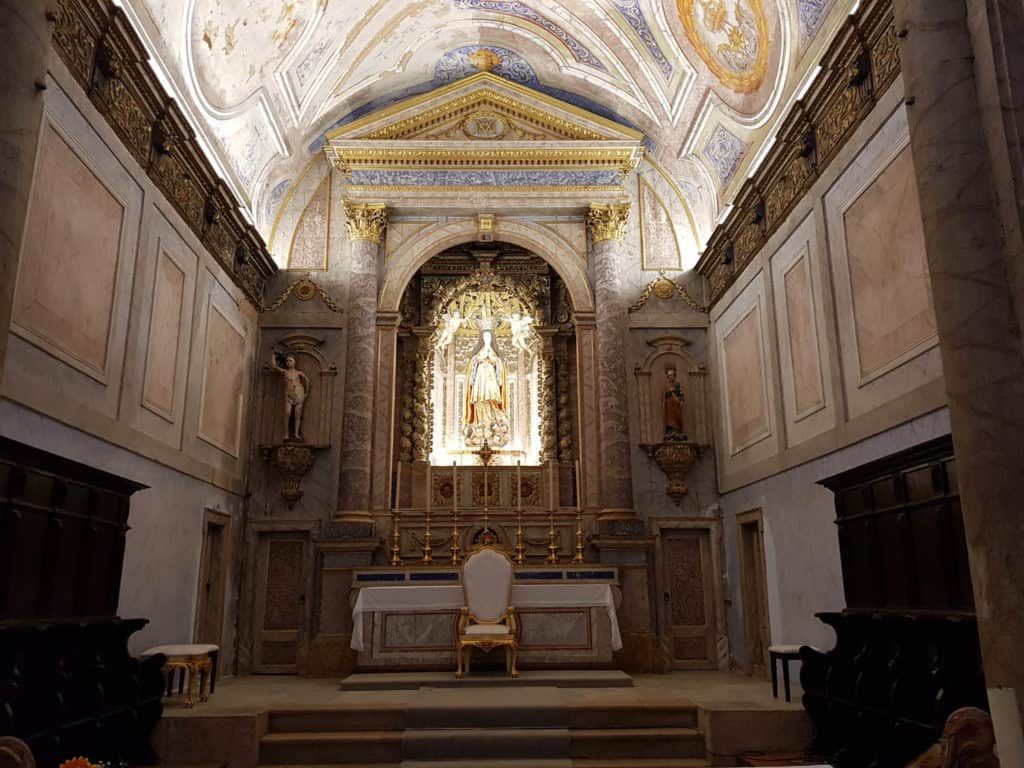
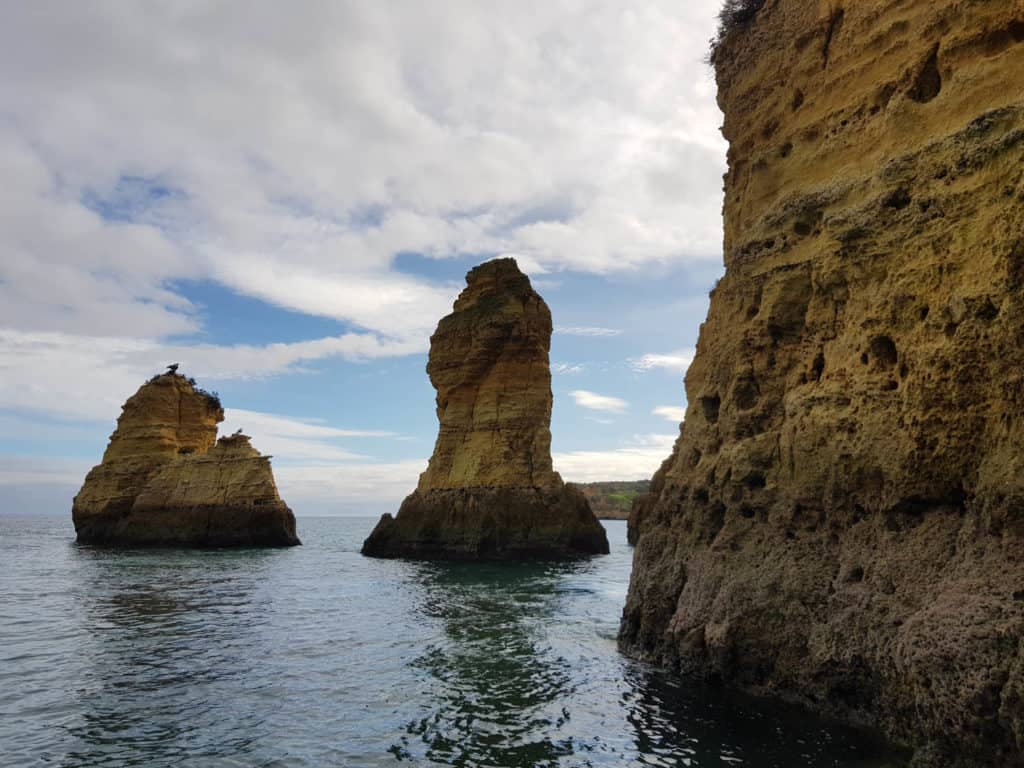
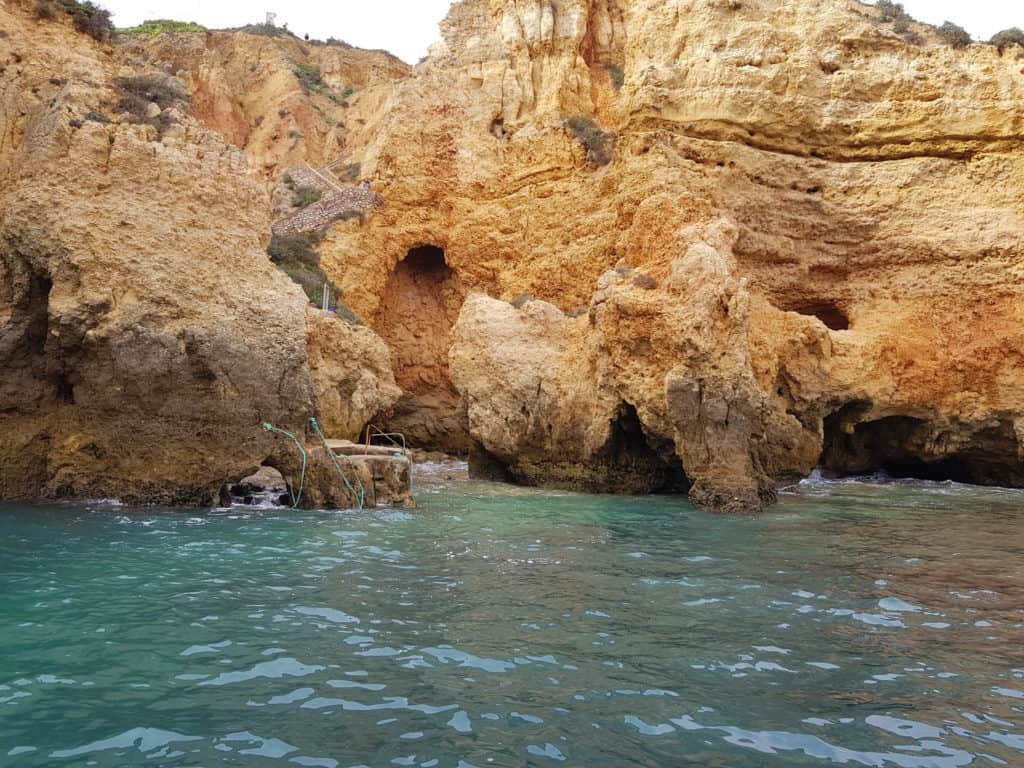
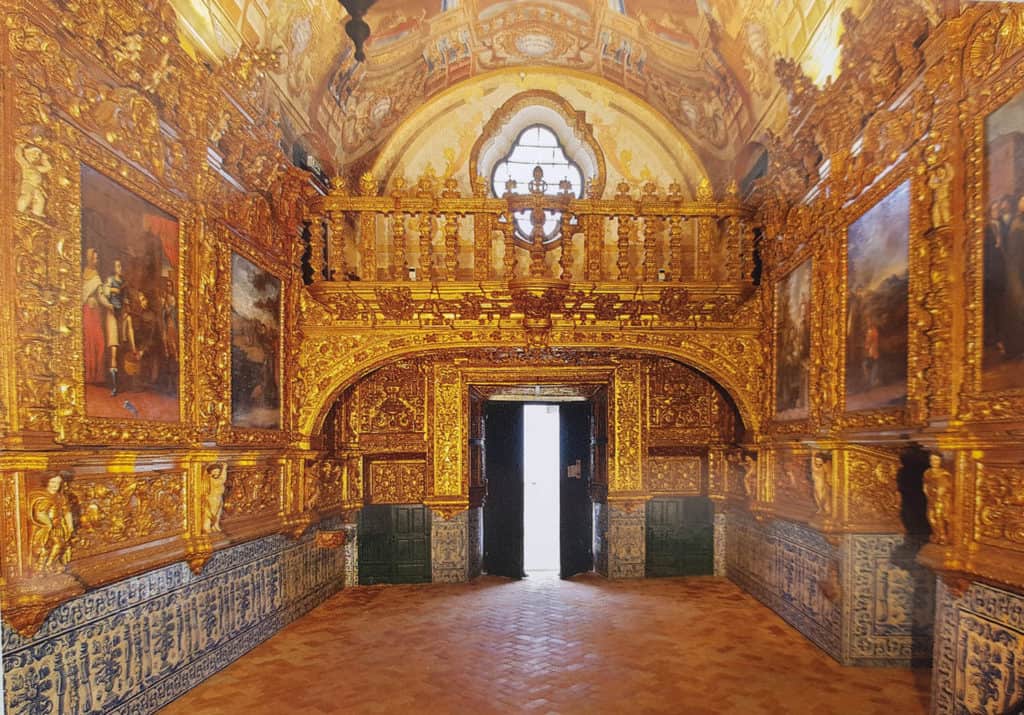
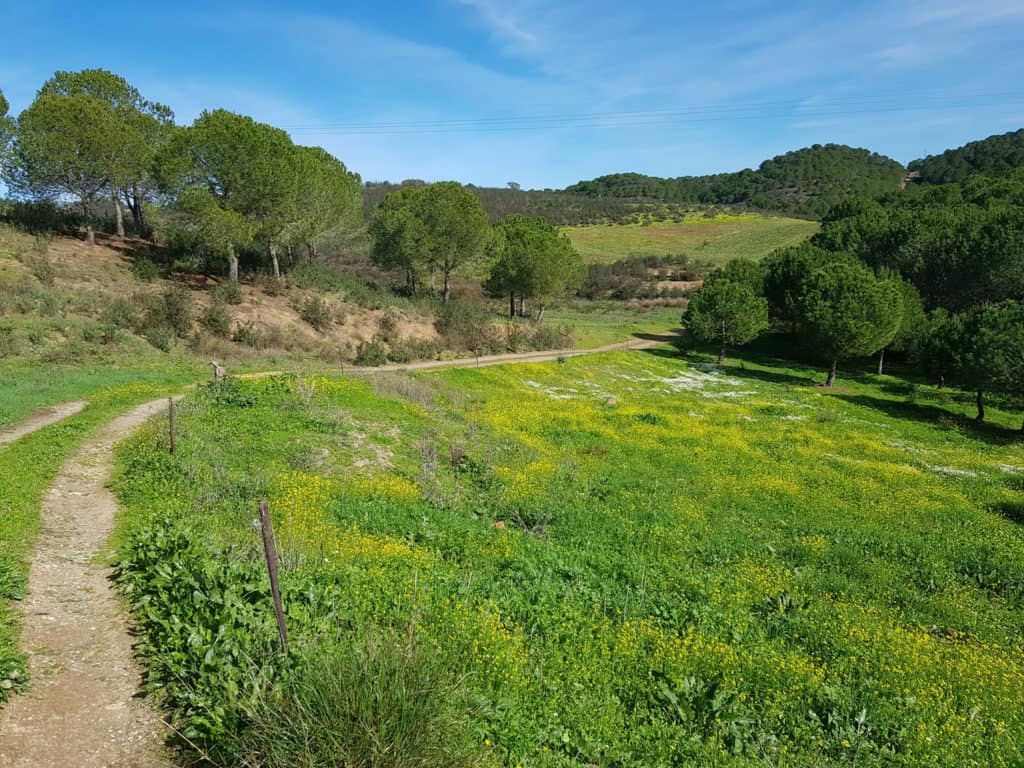
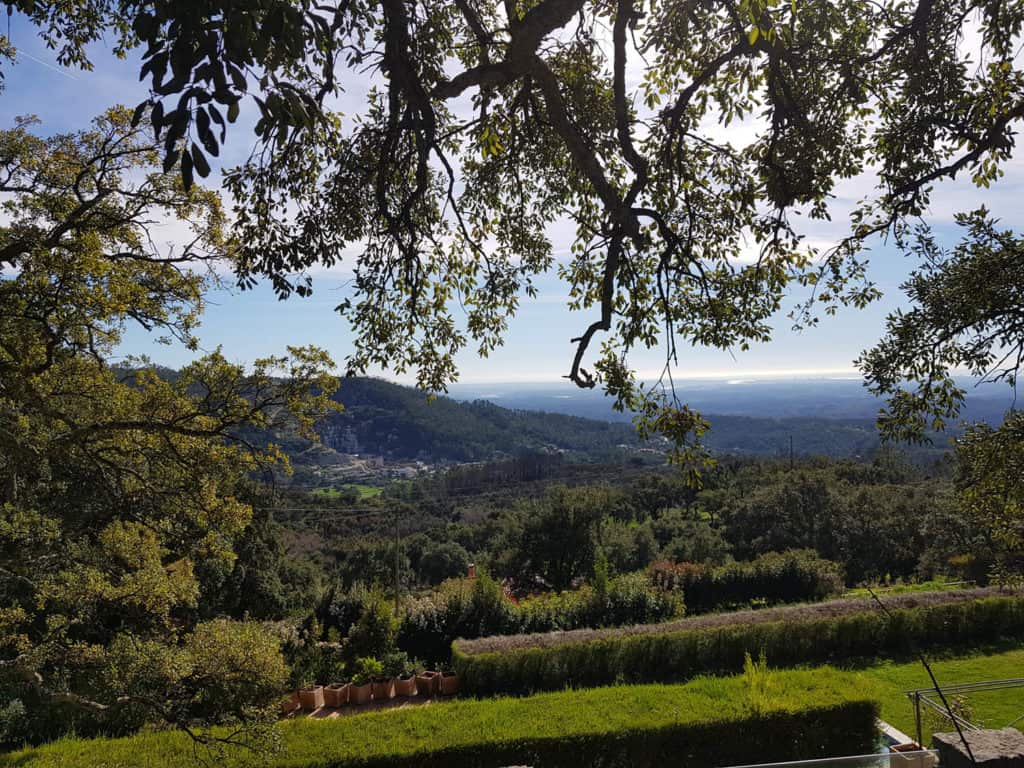
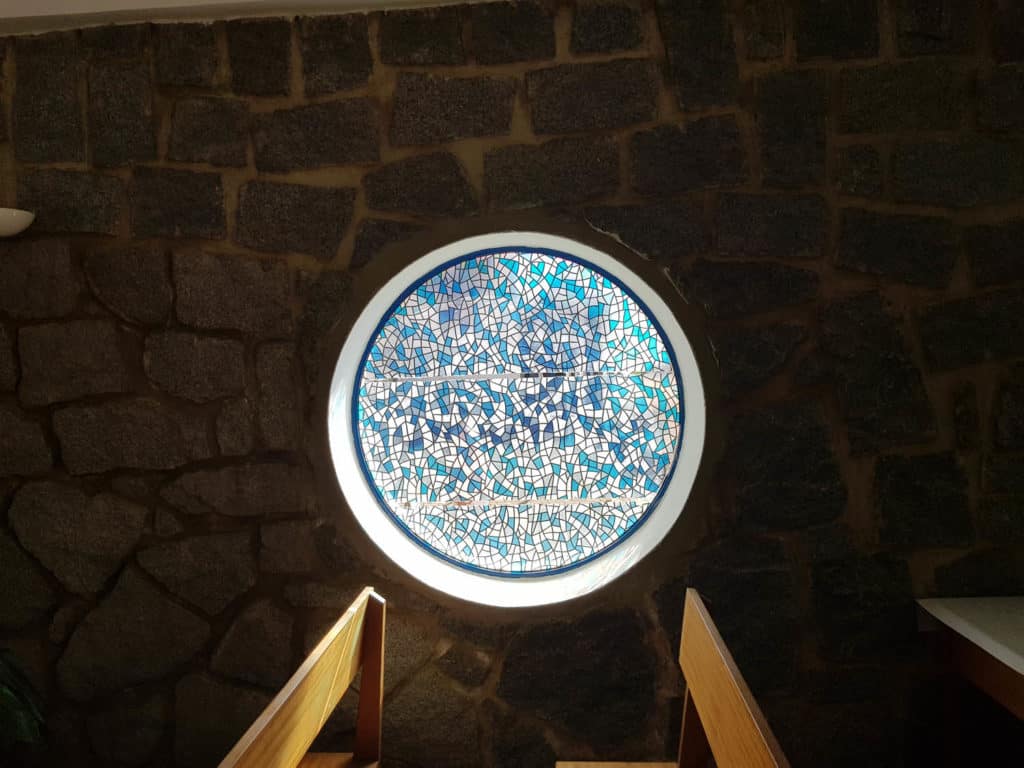
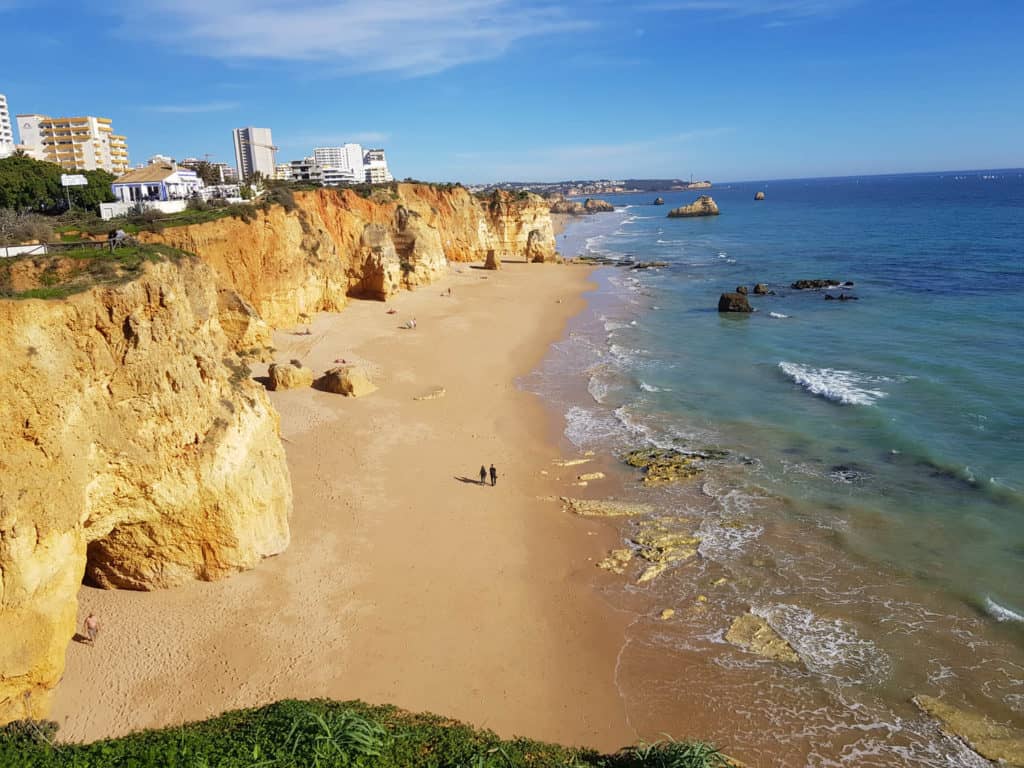
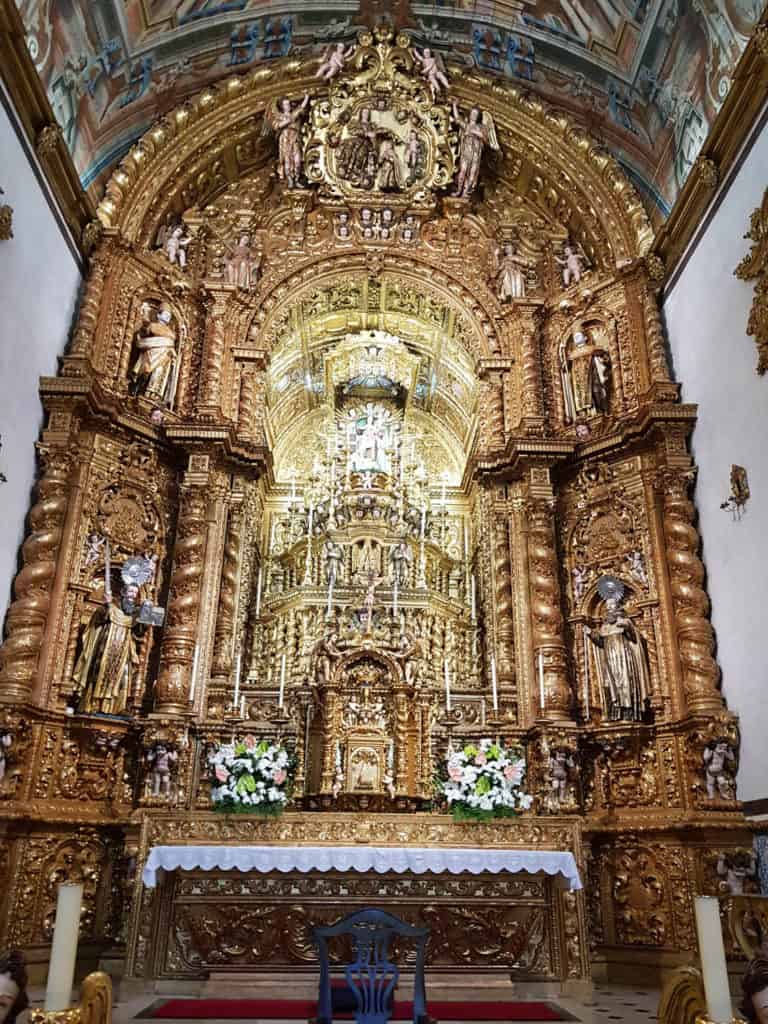
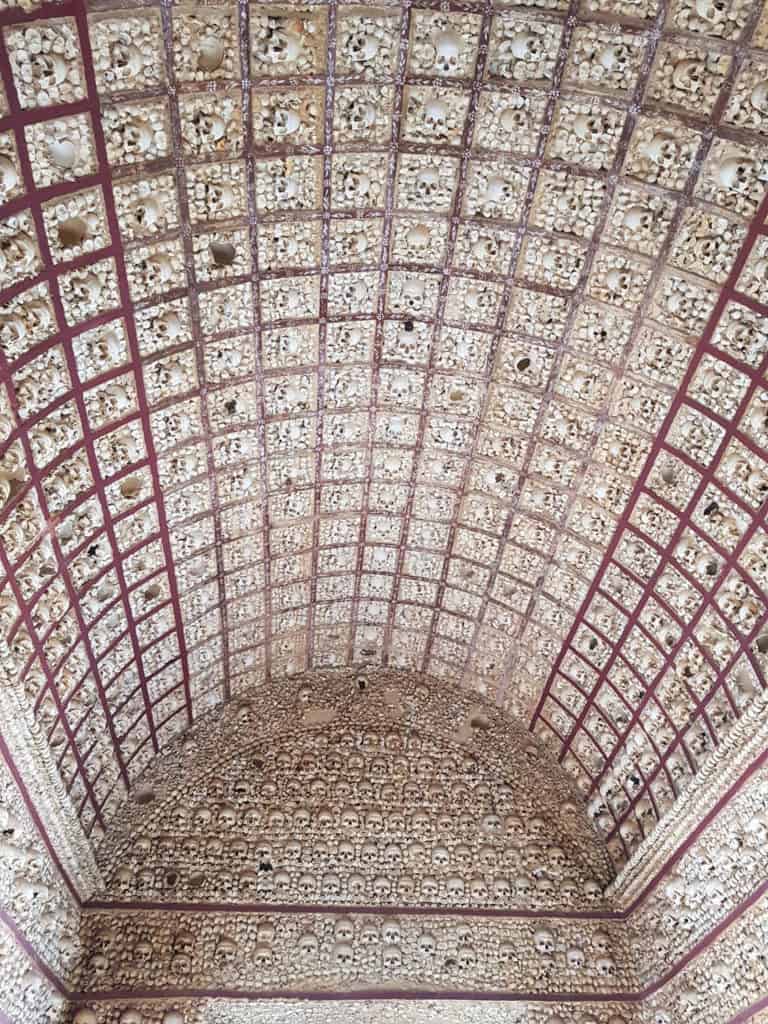

The “Bone Chapel”, Capela dos Ossos, in the church Igreja de Nossa Senhora do Monte do Carmo in Faro houses hundreds of bones and over 1,200 skulls of once deceased Carmelite monks. The “building material”, which became consecrated chapels also in other places due to lack of space because of limited burial sites, I could still marvel at in Alcantarilha in a small side chapel of the Igreja matriz de Nossa Senhora da Conceição. Also the Sé Catedral de Faro has an impressive, rich and lavishly arranged sacristy, museum and a historical organ. From the bell tower, one has an overwhelming panoramic view of Faro and the Ria Formosa nature reserve, a lagoon landscape of water, swamps, elongated islands and sand dunes with passages to the Atlantic Ocean.
